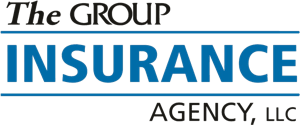
Roofing insurance claims can be complicated. That’s why it’s so important to have the right homeowners coverage for your roof.
Replacing a roof is one of the most expensive home projects a homeowner will encounter. According to Home Advisor, the 2020 national average a homeowner will spend on installing a new roof is more than $8,000.
While you can save up over months or years to replace an old roof, sudden damage from something like a windstorm doesn’t give you that option. Don’t wait until you need to submit a claim to understand what your policy can – and can’t – pay to replace. Keep reading for general answers to a few common questions. As always, your local Erie Insurance agent can give you more specific information (including a free quote customized just for your home).
How Does Homeowners Insurance Cover My Roof?
Short answer: It depends on your policy — but some offer more coverage than others.
Longer answer: Buying insurance is all about your comfort level with risk. A cheaper policy means you might pay a little less right now, but you could be stuck paying more out of pocket later if you need to file a claim.
With homeowners insurance, there are different ways you can choose to be compensated when you experience a sudden loss that’s covered by your policy. That is known as your “loss settlement option.” Simply put, it’s how your insurance company assesses the cost to rebuild, repair or replace your stuff.
At ERIE, coverage for your roof is factored into the cost to insure your dwelling. Loss settlement options for your dwelling may vary by state, so talk to your ERIE agent to better understand your options.
Common loss settlement options for your roof include:
- Actual cash value (ACV), which factors in the roof’s age and condition to determine how much it’s worth as-is when you file a claim. That’s known as a depreciation amount. When the bill comes in from the roofers, an ACV policy factors in depreciation and only pays up to the amount your roof is currently worth – even if the cost to repair or replace your roof is higher than that.
- Replacement cost, which pays to repair the damage to your roof without factoring in depreciation.
- Functional replacement cost is the amount that it would cost to repair or replace the damaged roof with less costly common construction materials and methods that are functionally equivalent to obsolete, antique, or custom construction materials and methods.
Other loss settlement options, such as extended replacement cost and guaranteed replacement cost, are also available (and good to have) with your homeowners policy. These are designed to give you an extra cushion if you experience a total loss of your home. Generally speaking, they’re less likely to kick in if you experience a covered loss of only roof damage.
Not sure which loss settlement option you have? You can find your dwelling amount and policy limits on your declarations page. (If you’re an ERIE customer, that’s easy to find in your Online Account.)
So, when it comes to insuring a big investment like your roof – you can see how your loss settlement option can make a big difference in how you can be reimbursed after a loss.
Age of Roof and Insurance
Remember that homeowners insurance is designed to cover the cost of sudden and unexpected damage. Generally, your policy doesn’t cover damage from delayed maintenance or routine wear and tear to an old roof.
If your roof is worn or in poor condition, having a roof covered on an ACV basis could become a big financial burden if you have to file a claim.
For example, let’s say your roof has seen better days. Then, bam! Lightning strikes and your neighbor’s tree falls on your roof. What happens next?
- If it’s insured on an ACV basis: If your roof is damaged near the end of its life expectancy, you’ll likely see a larger deduction for depreciation, but you’ll still get the same bill for what it costs to repair or replace it. That could leave you stuck paying the difference out-of-pocket.
- With replacement cost: There is no deduction for depreciation. This means you may pay a little more in premium for that policy (vs. ACV) –but you won’t be hit with out-of-pocket expenses.
One way to make a replacement cost policy more affordable is to increase your deductible. Your deductible is the amount you pay out of pocket after a claim and before your insurance company pays its part.
Ask your insurance agent to show you the cost difference with different deductibles so you can decide which dollar amount is best for your budget.
What Makes ERIE’s Coverage Different?
Each insurance company covers roof damage differently. It pays to understand how your policy works so you don’t run into any surprises after you have to file a claim.
Here are a few factors – known as “provisions” – to look for:
- Roof payment schedule or a breakdown of how your insurance company would pay for a roof claim based on factors, such as the age of the roof. (At ERIE, roof losses are paid based on the loss settlement that you select for your home.)
- Mandatory deductible or an amount that you will have to meet before the insurance company will cover your claim. (ERIE allows you to choose your deductible for your home and property based on what’s comfortable for your budget.)
- Wind or hail deductible or a separate dollar amount that applies to loss caused by wind or hail. Some carriers may require a higher wind or hail deductible without giving you a choice. At ERIE, it is an optional customization that can help lower your premium.
Filing a Homeowners Insurance Claim for Roof Damage
Uncertainty is part of life – but that’s why you have insurance. If you think your roof is damaged and you’re considering filing a claim, here’s what to do:
- Prevent further damage. Once the scene calms down (such as a hailstorm), take action to prevent any further damage to your home and belongings if it’s safe to do so.
- Document what happened. Take photos of the damage and list what was affected. (An updated home inventory can be helpful here.) List any date or timeframe that the event occurred.
- Call your insurance agent. Your agent can explain your options and help you understand if and how to file a claim.
- Know how to spot a scam. Sometimes, fraudulent or dishonest contractors – known as “storm chasers” – show up after severe weather hits. Storm chasers may point out pre-existing damage, create their own damage, or say that there is damage when there isn’t. Learn the signs to spot hail fraud and tips for hiring a reputable contractor.
Homeowners Insurance That Protects You Without Surprises
If you are unsure what your home insurance can cover – and what it can’t – ask your agent. Or you can request a homeowners insurance quote from a local ERIE agent near you.
Then relax and enjoy more of what makes you and your family happy knowing that your home, the investments you made in your home, and the things you value most are protected.

A better insurance experience starts with ERIE.
Haven’t heard of us? Erie Insurance started with humble beginnings in 1925 with a mission to emphasize customer service above all else. Though we’ve grown to reach the Fortune 500 list, we still haven’t lost the human touch.
Contact The Group Insurance Agency today to experience the ERIE difference for yourself.
